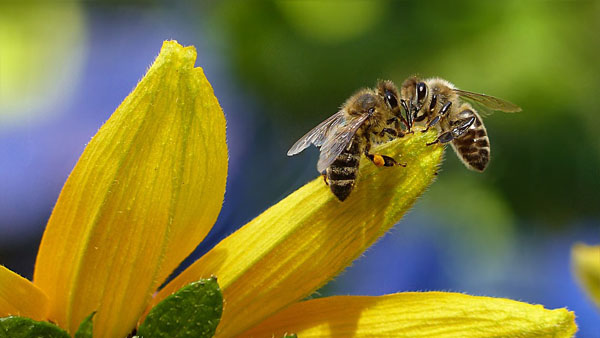Support a thriving environment of pollinators

(Story Courtesy of Kentucky Today)
FRANKFORT, Ky. (KT) – A multiyear effort by state government to plant nectar-rich flowers and native plants on Kentucky’s roadsides continues to support a thriving environment of pollinators key to crop production in the state.
As part of National Pollinator Week, observed June 17-23 this year, state highway officials celebrate Kentucky’s focus on nurturing a healthy environment while maintaining safe roadsides.
Since 2015, the Kentucky Transportation Cabinet (KYTC) crews have seeded more than 100 habitat sites, covering about 200 acres along interstates, parkways and other state rights of way.
“The cultivation of these pollinator plots is one of the many ways we strive to be good stewards of our highway network,” said Transportation Secretary Jim Gray. “The habitats we create will improve our ecosystem, help plants reproduce and ultimately build a better Kentucky.”
Filled with a variety of grasses and native flowers, the colorful habitats attract birds, bees, butterflies and other creatures that drink nectar and feed off pollen, transporting grains as they move from plant to plant. This pollination helps maintain an abundant and stable food supply for humans and animals.
Drivers can see pollinator plots in many roadside areas, including fields between interstate lanes and exit ramps, roadsides adjacent to multilane parkways, four-lane highways such as U.S. 23 in Eastern Kentucky or similar locations.
Monarch butterfly waystations have also been installed at welcome centers, rest areas and other sites to provide specific flowers needed by the insects.
This year, additional pollinator habitat has been added to highway construction projects on Interstate 69 in Western Kentucky and elsewhere.
“While these plots add color to our drives and landscapes when the flowers bloom, their beauty is a secondary benefit,” said Mike Smith, roadside environment state administrator in the KYTC Division of Maintenance, Roadside Environmental Branch. “The survival of our pollinators is essential to the survival of many native plants, birds and animals.”
It can take several years to fully develop plots as crews work to remove competing vegetation and reseed selected areas with a wildflower pollinator mix. Areas near roads continue to be mowed routinely, while pollinator habitats are mowed less often to transform the habitat.
Increasing plant diversity along roadways can also improve driver safety. Studies have shown that vibrant wildflowers and plants of differing heights can increase driver alertness, which may reduce crashes. Deer-vehicle collisions can also be lessened by reducing freshly cut grass that deer enjoy eating.

 Hanover Man Receives Lengthy Sentence For Trafficking Fentanyl
Hanover Man Receives Lengthy Sentence For Trafficking Fentanyl
 General Motors sold Hoosier drivers on using OnStar then sold their data to raise rates
General Motors sold Hoosier drivers on using OnStar then sold their data to raise rates
 Kentucky State Police Investigates Trooper-Involved Shooting in Gallatin County
Kentucky State Police Investigates Trooper-Involved Shooting in Gallatin County





